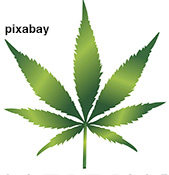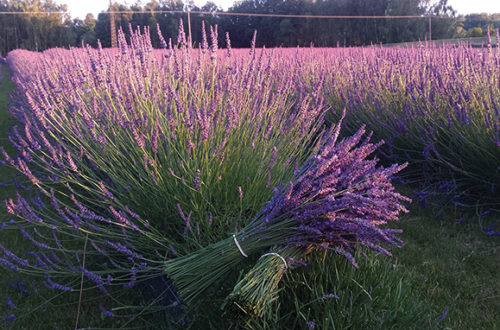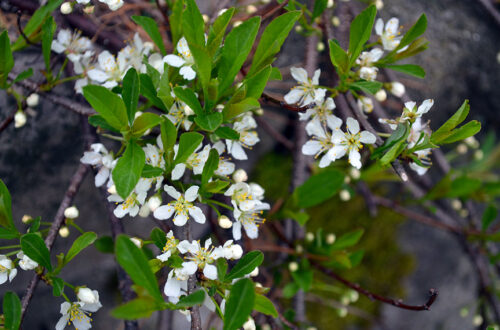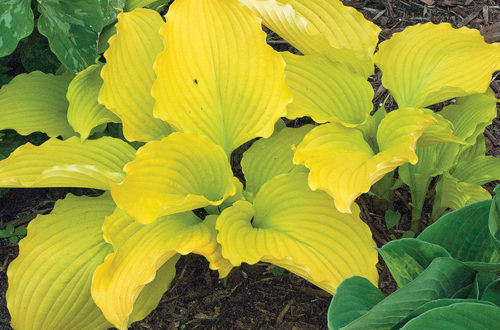By Bryan Connolly
By now you’ve probably heard a lot about Cannabis in Connecticut. As of July 1, 2022, it is legal to possess up to 1.5 ounces of THC Cannabis on your person and up to 5 ounces in your house in the state.
Additionally, on Jan 10, 2023, dispensaries opened for legal sale to individuals over 21 for recreational use. For gardeners the exciting part is yet to come. On July 1, 2023, adults over 21 will be allowed to cultivate 6 THC Cannabis plants in their homes.
This article will introduce the plant and the laws on its cultivation. Part 2 will appear in a subsequent issue of Connecticut Gardener and will be a nuts and bolts introduction to growing Cannabis at home.
First a few definitions. What is Cannabis? You likely know this plant by many names: grass, pot, weed, herb, hemp, ganja, Mary Jane and sinsemilla. The term marijuana has a racist connotation associating Mexican Americans with its use, and the plant under this name has been used to marginalize and stigmatize communities of color.
I will mostly use the term Cannabis to cover all the plants in the genus, then specify use; e.g. fiber Cannabis, or THC Cannabis. Here are a few terms that will help with the discussion.
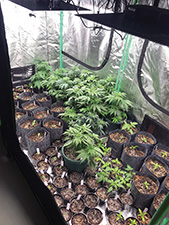
Auto-flowering – usually just called “auto” or “autos,” strains developed from the ruderalis subspecies that flower at any day length, usually smaller and may have lower yield but are easier to grow. These strains have improved and have become popular recently among home growers.
Cannabinoids – a unique group of chemical compounds made by the genus Cannabis including THC, CBD, and CBG. There are over 100 known cannabinoids, the effect on human health of many is still unknown.
Cannabis – the name of the genus, sometimes used as an umbrella term for all types of plants in the genus or just for THC types. Often used instead of marijuana.
CBD – a non-intoxicating cannabinoid, widely used by the public and thought to relieve stress and be an anti-inflammatory. A concentrated form, epidiolex, is a prescription medicine used to treat epilepsy.
CBG – another non-intoxicating cannabinoid, known as the “mother” cannabinoid since it is the chemical precursor to THC or CBD. In several strains it is the dominant cannabinoid, used to treat stress, inflammation and glaucoma.
Clones – plants that are started from cuttings of a desired genetic individual.
Clone Mother – a superior plant that is used as cutting stock to make clones of one genetic individual.
Cola – the long terminal group of female flowers on a Cannabis plant.
Dioecious – a species of plant with male and female individuals, such as Cannabis. The males for THC, CBD, and CBG crops need to be removed: pollination causes the plant to direct its energy to producing seed and not cannabinoids. Unpollinated flowers of female plants make the highest concentration of THC, CBD, and CBG. Hermaphroditic plants do occur in Cannabis and should be removed from your grow area.
Feminized Seed – Cannabis seeds that will result in 95-99% female plants.
Flower – calyx and female flowers, aka “bud” of female plants, the part of the plant with the highest cannabinoids.
Hemp – Cannabis plants that are federally legal. They must have less than 0.3% THC content. Different cultivars or varieties (generally called strains in the Cannabis world) have been developed for different purposes, e.g. fiber, oil seeds, and non-intoxicating cannabinoids such as CBD or CBG. You must have a state license to grow these plants in Connecticut, and rigorous testing is done to be sure crop levels are below 0.3%.
Photoperiod – classic Cannabis strains remain vegetative with long daylengths, generally 18 hours for 4-10 weeks and then 6-8 weeks in flower with 12 hours of light per day. The longer the vegetative cycle the bigger the plants, but longer to harvest. These plants will not flower with long daylengths.
Regular Seed – Cannabis seeds that will result in male and female plants.
Sinsemilla – unpollinated mature female flowers, the desired product from CBD, CBG or THC Cannabis. Has higher flower production and cannabinoid percentage than pollinated flowers. Also saves the step of removing seeds before use.
Strain – variety, cultivar, or sometime individual clone of Cannabis with a known set of characteristics and uses.
THC – a cannabinoid known for its intoxicating effects but also used medically, strains with a content above 0.3% are still federally illegal but can be grown by licensed medical and recreation dispensaries within certain states including Connecticut. As of July 1, 2023, it will be legal to be grown by individuals over 21, 6 plants per person or 12 per household.
Trichomes – hairs that are located on the flowering section of the female plant, these are the site of most cannabinoid production.
Trim Leaf – the leaves associated with the flowers, they produce some cannabinoids but less than the flowers, these are usually separated from the flower and used for edibles and tinctures.
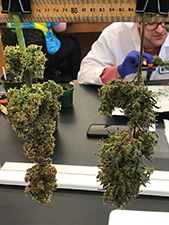
So what is the difference between CBD, CBG, and THC strains? Not much really, except for the cannabinoid they produce.
Looking at a plant visually it is nearly impossible to tell a CBD or CBG strain from an intoxicating THC strain. I compare it to peppers: there are some varieties that look nearly the same, but one can be very hot and the other sweet. The difference between hot or mild in peppers is a few genes. It is the same for Cannabis, a few genes dictate what cannabinoids are made by a plant.
Therefore, it is imperative you know what strain(s) you are growing. At the end of your grow, you can test your harvest so you know the cannabinoid type and concentration, which will determine use. There are kits you can purchase online, and some hydroponic stores may have testing machines to help you determine your THC, CBD, or CBG content.
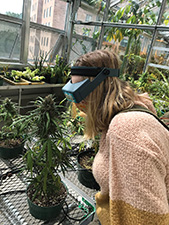
Growing Your Own
This article has home growers as the target audience. There is a process to apply for a commercial THC cultivation license that can be viewed at bit.ly/3CG3wZM
Know the rules: check the regulations on the State of Connecticut website before you grow your own: bit.ly/3ICgNGp
In short, no THC plants can be grown outdoors by individuals in Connecticut; a cultivator or microcultivator license is needed for that. Plants being grown by individuals must be grown in a secure area and not visible from the outside of the building. An individual over 21 can grow 6 plants: 3 can be mature or in flower and 3 immature or vegetative. Only 12 plants are allowed per household, so even if you have people over 21, only 12 plants (6 immature and 6 mature) can be grown.
Again, the general public cannot grow Cannabis until July 1, 2023. Medical marijuana patients can currently cultivate plants, the rules for that program can be found at bit.ly/3W4vV2c
Now that you understand what can be grown by individuals I will cover how to grow in the next article. In a subsequent issue I will discuss strain selection, indoor growing equipment, growing media, pruning and harvesting.

Bryan Connolly is an assistant professor in biology at Eastern Connecticut State University. Dr. Connolly is a botanist and horticulturalist. His research interests include rare plants of New England, the nightshade family, roses and Cannabis. He is a former president of the New England Botanical Society.
Taxonomy & Family Relations of Cannabis
Cannabis is a genus in the Cannabaceae, a family which also includes hops (Humulus) and hackberries (Celtis). Cannabaceae is the sister family (closest relative) to the Moraceae, this family includes figs (Ficus) and mulberries (Morus).
Within the genus Cannabis there are three entities: indica, sativa and ruderalis. These entities are considered species by some, or subspecies by others. I tend to think of them as subspecies since they all can be crossed or hybridized with each other and retain their fertility or ability to reproduce by seed or pollen.
The indica types are generally shorter have wider leaflets and known to have more of a “body high,” likely because they contain both CBD and THC.
Sativa types are taller, have thinner leaflets, and are know for the “head high” caused by THC being the dominant cannabinoid.
Ruderalis plants were originally small weedy plants native to Siberia, they are the source for the autoflowering or daylength neutral trait that has been bred into many popular new strains.
